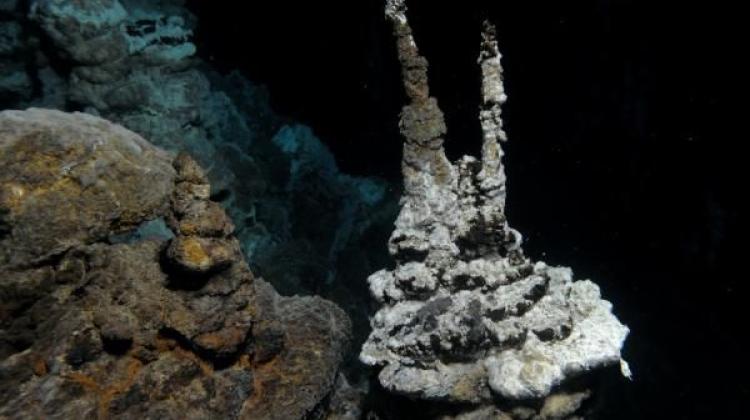Discovery of the missing link in the evolution of complex cells

New microorganism, which is the missing link in the evolution of complex life forms, has been discovered on the seabed between Greenland and Norway by team of researchers, which includes a Polish scientist. The results have been presented in "Nature".
These study allows to better understand how billions of years ago simple, microbial ancestors evolved into complex cells, which include plants, fungi and animals, including humans.
"We discovered a microorganism that can be described as the missing link in the evolution of complex cells. All the biology textbooks begin with drawings of a simple bacterial cell and a complex plant or animal cells. In short, we have something that goes between them" - told PAP one of the authors of publications, researcher of evolution of microorganisms working at the University of Uppsala, Katarzyna Zaremba-Niedźwiedzka.
Cells are the basic building blocks of all organisms on our planet. Microbial cells are small and simple in structure, and the cells that make up larger organisms, such as plants and animals, are much larger and more complex. The emergence of these complex cells has long been a mystery to scientists.
A team of researchers from Uppsala University (Sweden), in collaboration with scientists from universities in Bergen, Norway, and specialists from Vienna have now discovered a previously unknown microorganism - archaea, which is the missing link in the evolution of complex cells from simple forms.
Archaea were discovered in the 1970s by a renowned biologist Karl Woese. He showed that there was a new, hitherto completely unknown group of microorganisms that formed a separate branch of the tree of life. His discovery in its time was a total surprise for researchers. Archaea cells were small and simple, in which they resembled bacteria, but they proved to be more closely related to organisms with complex cells, called eukaryotes.
Since that time it has been hypothesized that eukaryotic cells evolved from archaea, however, the evolutionary transition between simple and complex cell remained a mystery. In an article published in May in “Nature”, researchers from Uppsala University in Sweden, together with colleagues from universities in Bergen (Norway) and Vienna (Austria), describe the discovery of a new group of archaea, Lokiarchaeota ("Loki" for short) which turn out to be the missing link in the evolution of eukaryotes.
"The puzzle of the origin of the eukaryotic cell is extremely complicated, as many pieces are still missing. We hoped that Loki would reveal a few more pieces of the puzzle, but when we obtained the first results, we couldn’t believe our eyes. The data simply looked spectacular" - said lead researcher Thijs Ettema from the Department of Cell and Molecular Biology at Uppsala University.
"By studying its genome, we found that Loki represents an intermediate form in-between the simple cells of microbes, and the complex cell types of eukaryotes" - said Ettema.
When Loki genome was placed in the tree of relationships, the interpretation was confirmed. "In our analysis Loki appears next to eukaryotic organisms" - said Lionel Guy, researcher at Uppsala University, involved in the study.
"In addition, we found that Loki shares many genes uniquely with eukaryotes, suggesting that cellular complexity emerged in an early stage in the evolution of eukaryotes" - explained one of the lead-authors of the study, Anja Spang from the Uppsala University.
The name Lokiarchaeota is derived from the hostile environment close to where the organism was found, at a depth of 2,352 meters, near Loki’s Castle, which is the name of hydrothermal vent system on the Mid-Atlantic Ridge between Greenland and Norway.
"Hydrothermal vents are volcanic systems located at the ocean floor. The site where Loki is, is heavily influenced by volcanic activity, but actually quite low in temperature" - said Steffen Jørgensen from the University of Bergen, who was involved in taking the samples.
"Extreme environments generally contain a lot of unknown microorganisms, which we refer to as microbial dark matter" - said Jimmy Saw, researcher at Uppsala University, and co-author of the paper. "We now have access to new techniques that allow us to study this dark matter" - added Katarzyna Zaremba-Niedźwiedzka from Uppsala University.
Ettema and his team hope to learn more about how complex eukaryotic cells evolved by studying microbial dark matter with new techniques.
"In a way, we are just getting started. There is still a lot out there to discover, and I am convinced that we will be forced to revise our biology textbooks more often in the near future" - concluded Ettema. (PAP)
zan/ krf/ mrt/
tr. RL
Przed dodaniem komentarza prosimy o zapoznanie z Regulaminem forum serwisu Nauka w Polsce.















